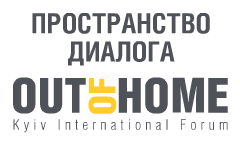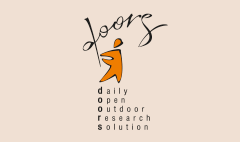According to the Editor-in-Chief of analytical web-resource Digital Signage Pulse(USA), which specializes in digital screens, all traditional media and even online advertising are going through a rough patch now. But outdoor advertising in the USA keeps gaining strength.
The latest figures from the foreign media analytics Kantar Media Kaplan and Millers how that US OOH ad revenue growing for the 21st consecutive quarter year-over-year. That has happened mainly due to the growth of DOOH. The average annual growth rate (CAGR) of digital outdoor advertising technologies has increased by15-22 %.
Comparing outdoor advertising to other media, the Editor-in-Chief of Digital Signage Pulse concludes that Out-of-Home finds itself in a highly favorable position in the modern media landscape. The continuing fragmentation of TV, radio, print, and online media leaves OOH as the only remaining true mass medium. Moreover, OOH appears to be free from the shortcomings of other media. OOH does not interrupt any activities as TV, radio, and mobile ads do. At the same time, OOH is not affected by ad fraud, ad skipping, ad blocking tech, and the low viewability rates plaguing online and mobile advertising. OOH has been rated the second most-trustworthy medium (after TV) in a 2014 study by the international OOH industry body, International Fédération de la Publicité Extérieure (FEPE).
OOH and DOOH campaigns are increasingly proving their effectiveness either via traditional metrics (panel research) or new, high-tech methodologies (electronic viewer detection and mobile engagement). The Outdoor Advertising Association of America (OAAA) has compiled a comprehensive collection of research data on the value of OOH.
The full charts are available to members, but here are some highlights:
• OOH has some of the lowest CPMs and the highest ROIs both as a stand-alone medium and as part of a media mix. Adding OOH to other media can increase reach by up to 316%.
• OOH produces the best combination of reach and consumer action of all forms of advertising in the key half-hour after exposure.
• OOH rivals TV in its ability to build brands.
• OOH reaches more consumers than any other medium in the half-hour before key mobile activity such as search, social media engagement, and online shopping.
• Billboard ads prompt more positive responses than ads on live TV.
• OOH delivers more online activity per advertising dollar spent than any other offline medium.
• OOH generates search, action, and word-of-mouth among consumers.
• OOH reaches consumers at critical moments during the path to purchase, significantly increasing its influence the closer the consumer moves to actual purchase .
• Seventy one percent (71%) of digital billboard viewers feel digital billboard adsstand out better than online ads, and almost as well as TV ads .
Advantages of OOH advertising are also clear in comparing "pull" and "push" models of advertising. The “push”, where ads intrude upon people when they are enjoying entertainment or news content, is the concept upon which the TV, radio, and online display ad businesses are built. Such advertising is being actively rejected by modern consumers. Google has introduced the “pull” based concept of AdWords, whereas advertisers pay only for the ads clicked on by consumers while they are searching for products and services. Unlike the “push” ads, OOH is not intrusive, as people always have a choice not to look at posters. But when the OOH content is relevant and well designed, people notice it and many act on it via mobile phones. In this respect OOH, especially when coupled with mobile, is closer to the “pull” model, widely preferred by consumers.
It should be noted that recently the largest European technology companies are paying active attention to Out-of-Home. And that is a clear sign of OOH’s stability. Apple launched iBeacons for retail and OOH advertising in 2014. The iBeacons are often used in conjunction with DOOH, which facilitates mobile user engagement and ad-triggered purchases. Google in conjunction with LinkNYC initiative is planning to convert payphone booths into free WiFi hot spots that will also serve as advertising screens in New York. Also this year, the company introduced Eddystone – Google’s version of beacons. Facebook recently started giving away its BlueTooth Beacons to small- and medium-sized businesses (SMBs), as part of its plan to become a dominant player in mobile-empowered local advertising. Companies working on advancing the Internet of Things (IoT) keep DOOH in their sights as one of the prime applications for IoT that will enable pin-point precision in targeting and high relevance of advertising messages.
Out-of-Home measurements are actively developing in America. The Traffic Audit Bureau for Media Measurement (TAB) has been measuring the audience of roadside displays since 1933. TAB OOH Ratings have undergone several recent upgrades that included digital billboard and transit measurement, and at this moment the organization is working on a new, improved system of measurement for the OOH industry. TAB has enhanced its impression measurement with a Visibility Adjustment Index, or VAI. Developed on the basis of advanced eye-tracking studies, the VAI scores adjust TAB impressions to only count the people who are likely to look at OOH advertisements. A number of companies have built viewer-tracking technologies that detect people who look at DOOH displays and can identify their gender, age, and race, without storing any personal information.
A lot of progress has been made in OOH measurements. The challenge here is that advertisers today want more than the CPM metrics. They want the equivalent of the "cost-per-click ", that is, "cost-per-action" and "cost per sale" metrics, to justify the allocation of ad dollars to OOH. That can provide a combination of Out-of-Home advertising with mobile and beacon technology. The symbiosis of OOH advertising and mobile communication is becoming the most powerful combination in today's advertising arsenal in European countries. International research company RealityMine in conjunction with Outdoor Advertising Association of America (OAAA)has recently conducted a study on consumers' purchase behavior.
The main conclusions of the study are as follows:
• Consumers rarely leave home without their trusted mobile devices. OOH’s reach, interactive capabilities, and captivating messaging move the consumer to reach for their mobile devices to learn more about a brand (product or service).
• OOH is more likely to reach consumers in the hour leading up to mobile activities (including email, apps, online shopping & more), outperforming TV, Radio and Print.
• Four out of ten respondents indicated they were exposed to an OOH message one hour prior to engaging in their mobile online shopping action.
|
Smartphone User Media Exposure In The Hour Before Mobile Activity |
|||
|
|
Exposure Before Mobile Social Activity |
Exposure Before Mobile Search Activity |
Exposure Before Mobile Shopping Activity |
|
Any Out-Of-HomeMedia |
28% |
32% |
43% |
|
TV |
27% |
26% |
27% |
|
AM/FM Radio |
8% |
9% |
12% |
|
Print Newspaper |
1% |
2% |
3% |
Reality Mine report concludes that outdoor advertising is often the first step towards buying in tandem with mobile phones. In addition, it is also instant and accurate mechanism for tracking the effectiveness of the campaign. Received from mobile devices data can be recorded, analysed and presented in accessible formats.
As for beacon technologies, they were developed quite a while ago, but it was recently rediscovered as an effective bridge facilitating the connection between businesses, OOH, and mobile consumers. Beacons help smart phone users get relevant local information, including promotions of products and services. Meanwhile they allow advertisers to make that information more targeted, and therefore more useful. The OOH-beacon-mobile combination provides another avenue for instant reporting on campaign effectiveness, as it logs data on engagement and sales. The number of beacons deployed in retail and related applications is growing at CAGR of nearly 300 percent a year, and is expected to reach 4.5 million in the US by 2018.
Progress in Out-of-Home is encouraging. And further development is very important not only for USA but also for Ukraine, because there are aspects that are of current importance for Ukrainian outdoor advertising, too.
One of them concerns the old agency model. Most agencies are still structured for buying TV, print, and radio, while OOH has traditionally been a bit of an outlier. TV and radio ratings, print circulation, and online page views are still the dominant metrics in the agency world. Using them requires less effort, compared with the amount of research and coordination media buyers have to do if they go with OOH and DOOH media. OOH properties need to be integrated into agencies’ trading systems, where all data required for planning, buying, and reporting is available. OOH buying should stop being more difficult than buying TV, radio and print.
The second very important aspect for progress in OOH advertising abroad and in Ukraine concerns Out-of-Home measurements. They should move beyond CPM indicators. Moreover, advertisers need to know about the true value of outdoor advertising. A recent study conducted by Clear Channel Outdoor UK revealed that less than a third of marketers are aware of OOH’s newly acquired engagement capabilities such as mobile/beacon integration, intelligent content, and new data platforms. Therefore, OOH associations and agencies must monitor and accumulate the latest findings by reputable research bodies on benefits of Out-of-Home.
The Editor-in-Chief of analytical web-resource Digital Signage Pulse claims that against the backdrop of problems experienced by TV, print, radio, and online advertising, OOH is emerging as a highly effective, accountable, and affordable mass medium of the future. The integration with mobile and beacons is promising to open up vast opportunities for OOH advertisers. Big hopes are placed on the programmatic buying and its potential ability to standardize and streamline the buying process for OOH and DOOH. OOH is a perfect fit for the rapidly developing IoT and its commercial potential. The few remaining skeptics should keep this in mind: the oldest advertising medium is being reborn, rejuvenated by digital and measured by new technologies.



